Boötes is one of the biggest constellations visible in the northern hemisphere sky and is perhaps most notable for containing Arcturus, one of the brightest stars in the sky.
The constellation Boötes represents a herdsman and he can be seen just behind his two hunting dogs, represented by the constellation of Canes Venatici.
Boötes is best seen in the springtime night sky, and is also well known for containing the Kite asterism, which is formed by the constellation's brightest stars
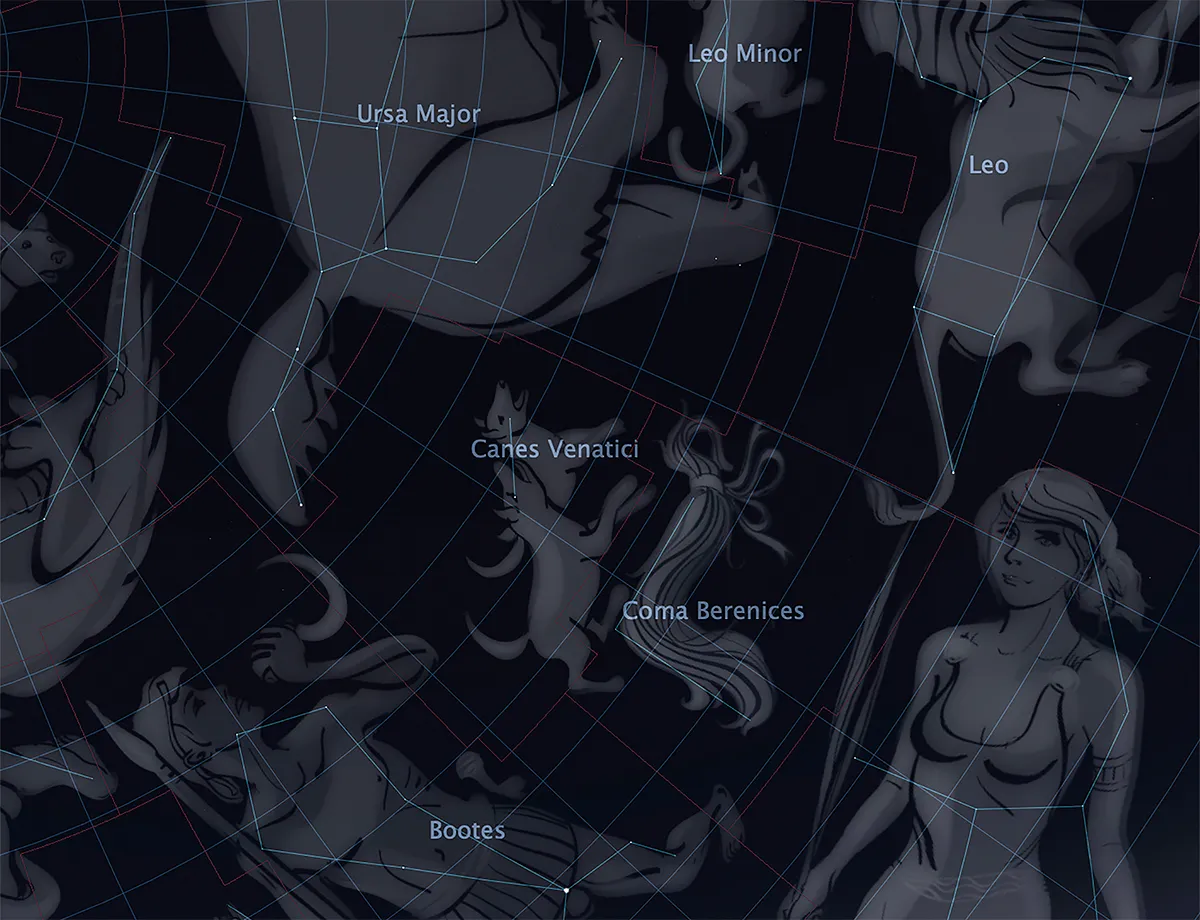
Exploring the constellation Boötes
If Boötes is currently visible in the night sky, grab a pair of binoculars and explore what the constellation has to offer.
If you don't want to use stargazing and astronomy app, you can easily find Boötes in the night sky by first locating the recognisable asterism of the Plough - or Big Dipper - in Ursa Major.
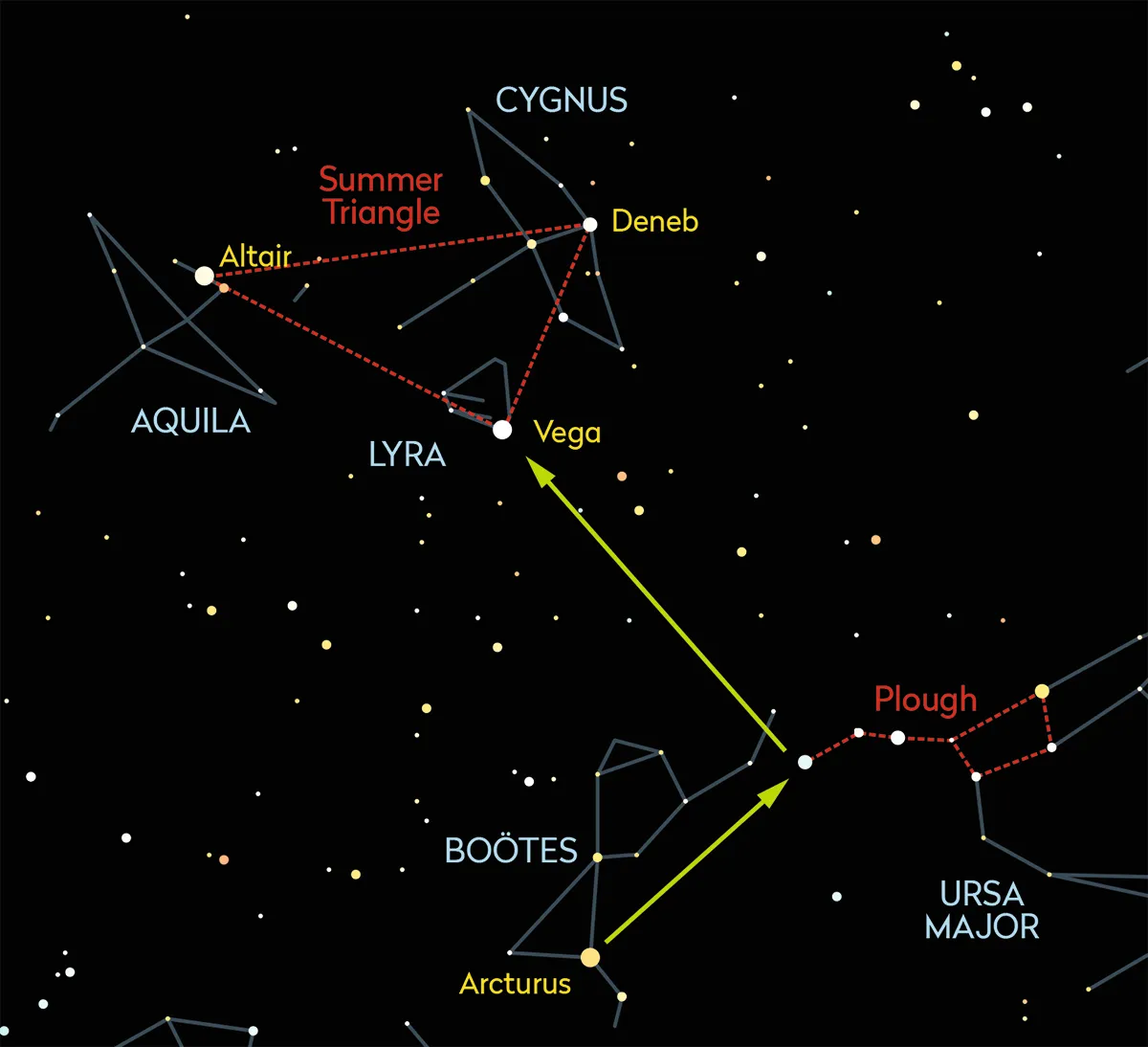
Follow the Plough's handle in the direction heading away from the star pattern and the next constellation you'll come to is Boötes. Arcturus is the brightest star at the bottom of the kite shape within Boötes.
Mag. +0.2 Arcturus is the leading star in the constellation of Boötes.
If the skies are dark enough, you may be able to see the star’s golden tinge with the naked eye, though the colour will be much clearer in binoculars.
Finding star Nu Boötis
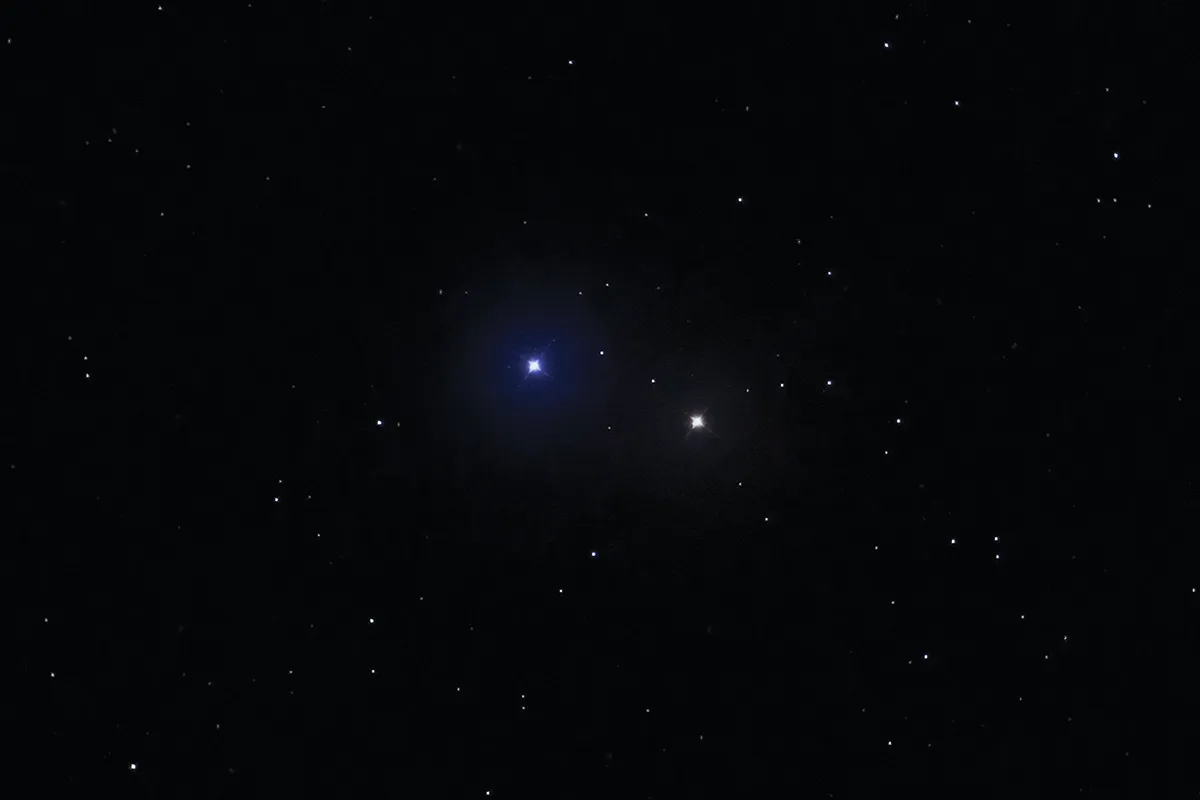
There are five stars above Arcturus that form the shape of large a kite (or, alternatively, an upside-down raindrop).
From Arcturus, star hop along the left-hand side of the kite, first to Epsilon Boötis and then to Delta Boötis.
These two stars are almost in a perfect line and equally spaced, so this should be easy.
From Delta veer to the right slightly and hop up to Mu Boötis. Look in the same direction for the same distance again and you’ll reach Nu Boötis.
Nu Boötis is a double star – that is, two stars that appear very close in a field of view.
The two stars that comprise this double are both of 5th magnitude, but at dramatically different distances from Earth: they only appear close together from our perspective.
White ν2is 430 lightyears away, but orange ν1 is more than twice as distant at 870 lightyears.
Finding star Izar
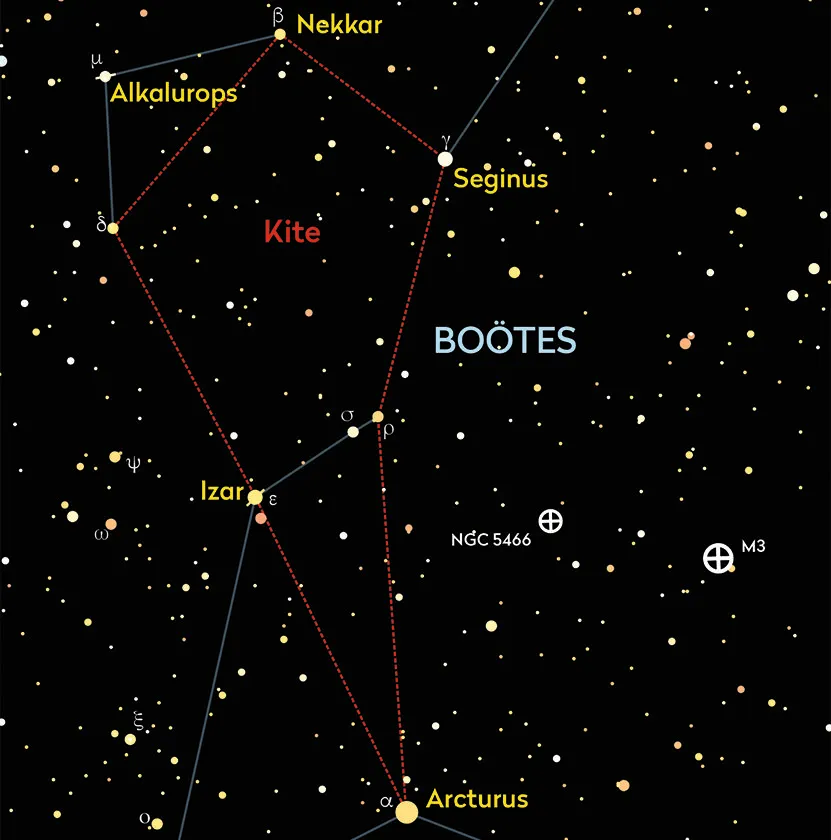
Izar (Epsilon (ε) Boötis) is the next star ‘up’ the eastern side of the Kite asterism, which begins in the south with the bright spring star Arcturus (Alpha (α) Boötis).
Izar is a beautiful double star consisting of a mag. +2.4 K0 II-III orange primary, separated from a mag. +5.1 A2 V white secondary by 2.8 arcseconds.
The difference in colours between both stars is what makes the pair so striking through the eyepiece, something which was noted by their discoverer FGW Struve, who named them Pulcherrima, meaning ‘loveliest’ in Latin.
Facts about Izar
The Izar system lies 203 lightyears away. At that distance, the apparent separation indicates that the two stars are 185 AU apart. They are believed to be in an orbit that takes 1,000 years to complete.
The primary is a late-stage star which has exhausted its supply of core hydrogen.
It has a mass 4.6 times greater than our Sun, but its evolutionary state means it has swelled to be 33 times larger.
Its secondary companion is more like our Sun: still on the main sequence of stellar evolution and estimated to be 2.2 times more massive and 2.7 times larger. But where our Sun rotates at the leisurely speed of 2km/s, Izar B rotates at 123km/s.
Eventually, like our Sun, Izar B will exhaust its core hydrogen and swell into a red giant.
By the time this has occurred, the primary will have shed its outer layers to form a planetary nebula, and the core will have become a white dwarf.
The name Izar is from an Arabic phrase for ‘girdle’ or ‘loin cloth’, a meaning that is also attributed to the similar-sounding Mizar (Zeta (ζ) Ursae Majoris).
Finding star Alkalurops
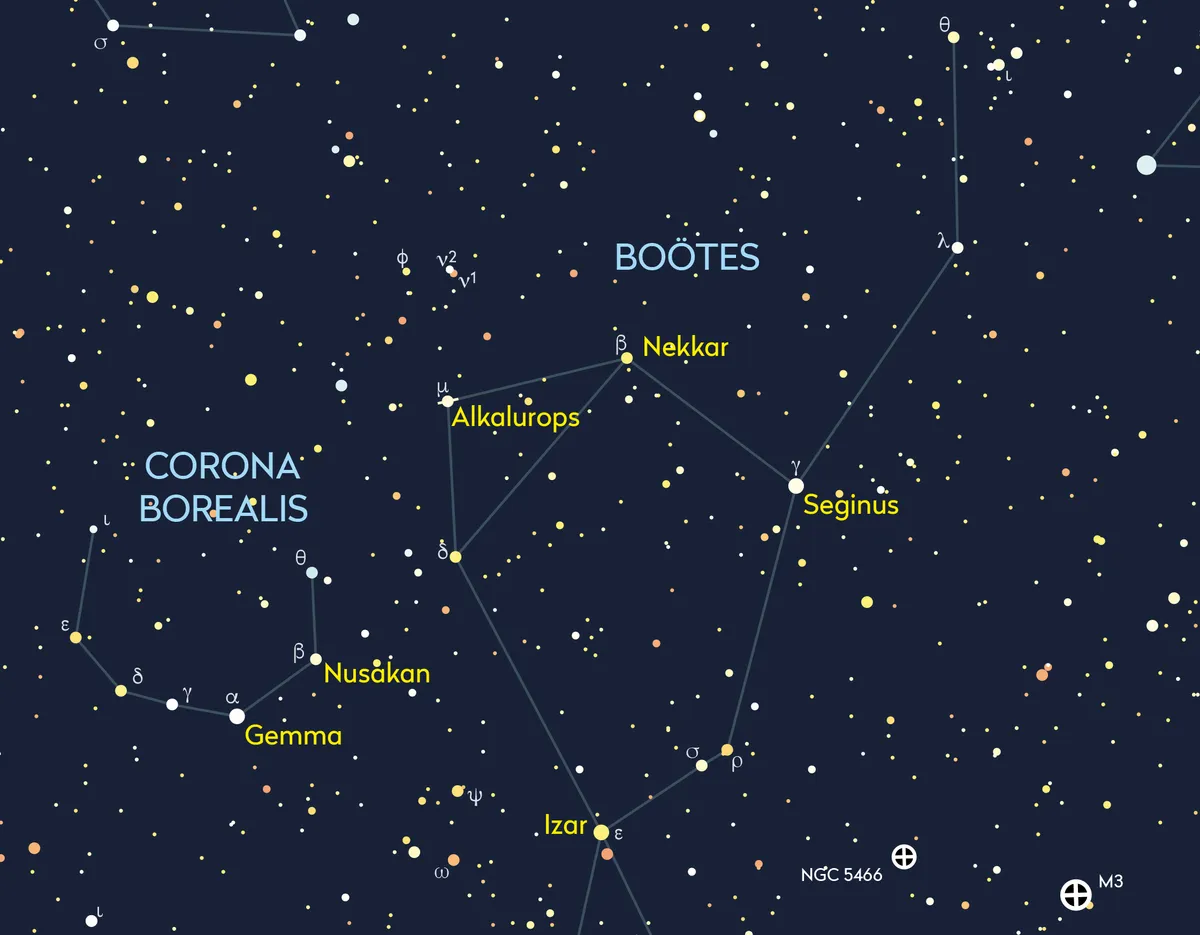
Alkalurops (Mu (μ) Bootis) is located close to the eastern border of Boötes, just to the northeast of the Kite asterism that represents the main body of the constellation.
The name Alkalurops means ‘a herdsman’s staff’ or ‘club’.
As with many of the stars that appear as single objects, under close scrutiny Alkalurops isn’t alone but rather a pair of double stars which may or may not be physically connected.
The two pairs are designated Mu-1 (μ1) and Mu-2 (μ2) Bootis.
The Mu-1 pair to the west carry the official name Alkalurops and appear close as seen from Earth with a narrow separation of 0.08 arcseconds, too close to be separated by amateur equipment.
To us the primary appears as a F0 V star of mag. +4.3.This spectral type indicates a yellow-white colour and a main sequence dwarf-type star.
Having a close physical separation, the orbital period of Mu-1 is rapid, estimated to be in the order of 300 days. The pair are referred to as Alkalurops Aa.
The Mu-2 pair can be split using amateur kit, having an apparent separation of 2.2 arcseconds.
Designated as Alkalurops BC, their colours are distinctly more yellow than Mu-1.
Their individual spectral types are of G1V (the brighter component) and G5V, the ‘V’ indicating that they are main-sequence dwarf stars.
Their individual magnitudes are +6.5 and +7.8 and their orbital periods are significantly longer than Aa, that for BC being estimated at 260 years.
The two pairs are separated by 108 arcseconds making it possible to see the Mu-1 and Mu-2 pairs in the same field of view. A magnification of x250 will confidently split the Mu-2 pair.
This guide is an amalgamation of articles that originally appeared in the June 2012, June 2020 and May 2022 issues of BBC Sky at Night Magazine.
